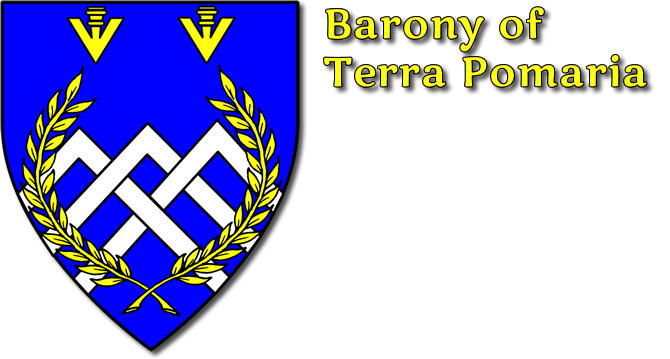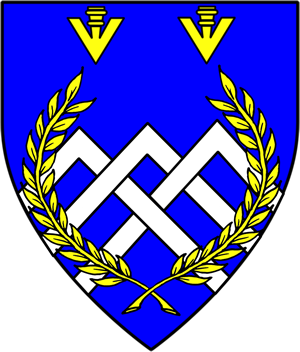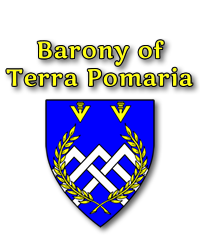18 Nov Capon or Goos Roste (Roasted)
Then Serve It Forth…
By Lady Rosemary Willowwood de Ste. Anne
Longer days draw on apace, and the agricultural year draws down to its close. After the grain harvest about the first two weeks of August, young geese were turned into the fields to eat up the grains that shattered out during the harvest. This custom fattens them nicely for the traditional feast holidays of Michaelmas, (which was a time of great markets after harvest) and Martinmas (which was the start of the slaughter season, when winter meat was laid in.). The large landholders often treated the peasants with the gift of a goose, often called a “stubble-goose”, because it fattened on the harvested fields
“Capon Or Goos Roste”
from A Noble Boke off Cookry for a Prynce Houssolde”
From the Holkham collection, sometime after 1476
To roste capon or gose take and drawe his lever and his guttes at the vent and his greece at the gorge and take the leef of greece parsley ysope rosemary and iii lengs of saige and put to the greece and hew it smale and hew yolks of eggs cromed raisisins of corans and good poudurs saffron and salt melled to gedure and fers the capon there with and broche hym and let hym be stanche at the vent and at the gorge that the stuffur go not out and roste hym long with a stoking fyere and keep the greece that fallithe to baist hym and keep hym moist till ye serve hym with wyne and guingere as capons be.
TRANSLATION To roast capon or goose, take and draw his liver and his guts at the vent and his fat (grease) at the gorge (neck), and take the leaf of fat, parsley, hyssop, rosemary, and three lengths of sage, add to the fat and chop it small, and chop yolks of eggs crumbed, raisins of corinth (see glossary), and good powders, saffron and salt, mixed together, and stuff the capon therewith, and broach him (put on a spit), and let him be closed at the vent and at the neck so that the stuffing fall not out, and roast him long with a stoking (hot) fire, and keep the grease that falls to baste him with, and keep him moist until you serve him with wine and ginger, as capons be.
REALIZATION: This recipe is a cold reminder that, even up to less than a hundred years ago, a chicken dinner began with an axe in the hen-yard. For those of you who have never had the dubious “pleasure” of butchering a fowl, I will explain that most of the “innards” are removed (drawn) at the lower end of the chicken (vent). In the abdominal cavity there is a VERY large sheet of fat; if you cook it, this renders to a very light, fine basting fat. Now that you have this information for the sake of interpreting the recipe, you can avoid this period experience and start with a commercial frozen goose.
Remove the giblets and neck from the cavity. If there are globules of fat, you may remove them, or use them as the recipe suggests. Chop the pieces of fat with a good handful each of parsley, hyssop, rosemary, and as much fresh sage as you can get. If you cannot find hyssop, use any strong herb you would use with poultry – basil in season, and thyme are both possibilities. Chop the herbs small. Mix with the fat, if you reserved any, crumbled yolks of hard-boiled eggs and dried currants, some “strong powders” as described last week, or a mixture of cinnamon, cloves, black pepper, and a little cardamom, if you are feeling profligate, along with salt. Rub this mixture into the cavity of the goose, and truss for roasting. Roast the goose on a rack in a covered roaster at 400 degrees for about two hours, then drop the temperature to 325 for the time remaining to finish the goose. (There will be rudimentary cooking time charts in any good cookbook, or on the bird’s plastic bag.) Baste frequently, and spoon off the greasy drippings. After the temperature is lowered, you can remove the cover and begin basting with a mixture of white wine or stock made from the neck and giblets, and a little ginger. However, keep removing the drippings; there will be a LOT of drippings, mostly fat. When the bird is done, skim most of the fat from the drippings, and thicken lightly for sauce. Carve the goose and serve with sauce.
There will be NO EDIBLE STUFFING with this bird. If you look at the materials you put in the cavity, you will find that they are greasy beyond belief, and won’t want to even try eating them. Stuffings such as we eat on Thanksgiving are for birds with much less fat than a goose. The point of the stuffing was to flavor the fat that runs out of the bird and is basted over the skin. Note that, in the original recipe, this bird is spit-roasted, so that, in addition to basting with the drippings, the flavored fat will run over the skin and keep the bird moist while adding flavor. If you want additional flavor in your goose, you can also try chopping in an onion and a few stalks of celery. But throw the stuffing out when you carve. If you can eat that mess, you have a stronger stomach than I! The covered roasting pan is also a necessity, unless you are willing to tolerate a demolished oven, a horribly smoky kitchen, and maybe a visit from the fire department supplied by concerned neighbors. The grease will spatter everywhere!
However, don’t just throw out the fat you removed without a thought. Goose grease was the substance which served for “three-in-one” oil in the Middle Ages, and was used to oil anything that didn’t need solid grease. The stuff is thickly pourable at room temperature, spreads quite easily on hands, and makes a rather nice hand salve when slightly thickened with beeswax. Spinners often oiled their spinning wheels with a goose feather dipped in goose grease. I am sure if any of you want recipes to experiment with, Lord Kevan and I can get you started.



